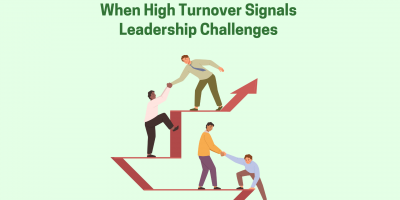
Free Survey Software in 2024
Transform your survey process into a seamless journey with these free survey software options to gain valuable insights and enhance audience engagement effortlessly.

Employee engagement is crucial for any company today. The way employees feel and connect with their organizations has a lot to do with their productivity and overall growth. When employees are not satisfied, they will leave sooner or later. Hence, companies need to focus on reducing the high turnover rates and hiring and managing talents.
Building a work culture that employees love to be part of can boost engagement. A culture that takes care of the employees’ needs and provides them with a great employee experience. But it is easier said than done.
Here are the 6 HR strategies that can help you improve employee engagement and build a healthy work culture.
Due to the growth of the sharing economy, rapid technological advancements, and globalization, companies are realizing that humans are their most valuable assets.
When companies view their employees as resources rather than human beings, the relationships start eroding, which leads to more disengagement and unhappy workers.
When companies create a human-centric working environment that empowers employees to take ownership.
When employees are not happy with their growth and development, they will stay demotivated and find ways to shift their jobs for better career opportunities. Ensuring a work culture where employees are allowed to grow is the key to building an engaged workforce.
To maintain a competitive edge, companies must invest in skill training for new employees, provide continuous training to existing employees, and develop their systems to improve continuously. Failure to invest in employee training software and employee development will cause a decline in productivity and cost the company in the long run.

Building a continuous feedback culture helps your company identify and understand any issues hindering employee performance. By conducting employee engagement surveys your HR team can bridge that gap. You can run internal surveys to understand employee engagement and overall work experience.
You can send survey questions to your employees about employee engagement, employee satisfaction, work-life balance, employee recognition, benefits and compensation, or productivity.
Once you get the data, you can dissect it and set internal benchmarks to address the core issues.
For example, if your survey results show low employee recognition scores, you can then build strategies and implement recognition programs to address the issue.
plays an integral role in building internal trust, improving morale and interpersonal relationships. Employees who are rewarded and appreciated are motivated to perform and are more likely to stay engaged. As Dale Carnegie put it, “People work for money but go the extra mile for recognition, praise, and rewards.” But employee recognition plays a much larger role than we think. For a clearer picture, here are some statistics from the industry report on “Boosting Retention Through Employee Recognition.”
The data gives a clear perspective on the importance of employee recognition. Yet, the question remains: Are HR professionals pulling the right strings regarding employee recognition? And if so, is the recognition meaningful, timely, and value-based?
Building an authentic employee recognition program where employees are timely rewarded and recognized is the key to keeping employees motivated and engaged.
Good physical and psychological health is a must for employees to perform and stay engaged. Mental health issues are at an all-time due to uncertainty, isolation, and sudden shift in work culture.
The best way to help workers is to provide a digital wellness program that they can benefit from. A wellness program can encourage employees to create healthy habits and participate in fitness challenges.

Employee engagement strategies that worked in the past are more or less obsolete today. After the Covid-19 pandemic, the work culture has taken a huge shift. In the ongoing “Great Resignation,” millions of employees have quit their jobs. Many didn’t proceed in their current roles and started looking for opportunities that were more aligned with their beliefs or values.
Others became more comfortable with the remote working environment and refused to return to the daily commute and physical work. Others showed interest in the hybrid work module. Therefore, it is evident that building work cultures that meet the demands of the new age are crucial for companies to retain employees and provide them with a good employee experience.
The ultimate goal for any HR professional is to keep employees engaged and satisfied. And this can only happen if companies understand that every employee is different, and so are their needs.
Senior Content Marketing Specialist at Vantage Circle
Browse our curated list of vendors to find the best solution for your needs.
Subscribe to our newsletter for the latest trends, expert tips, and workplace insights!

Transform your survey process into a seamless journey with these free survey software options to gain valuable insights and enhance audience engagement effortlessly.

Empower your workplace with these vital statistics to enhance engagement, collaboration, and productivity.

Discover how effective employee engagement drives productivity, retention, and profitability. Learn proven strategies to build a happier, more engaged workforce.

Great leaders don’t just ask, “Why are people leaving? But rather, “What must we change to make them stay?”
Used by most of the top employee benefits consultants in the US, Shortlister is where you can find, research and select HR and benefits vendors for your clients.
Shortlister helps you reach your ideal prospects. Claim your free account to control your message and receive employer, consultant and health plan leads.